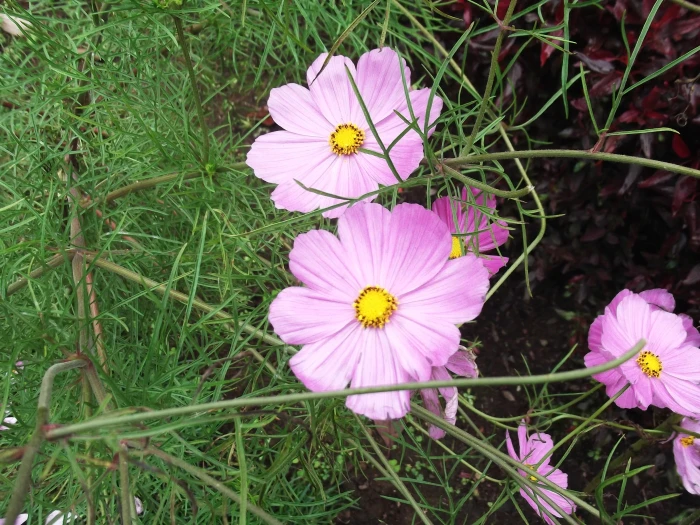Pink Tickseed
(Coreopsis rosea)
Pink Tickseed (Coreopsis rosea)
/
/

Yercaud-elango
CC BY-SA 4.0
Image By:
Yercaud-elango
Recorded By:
Copyright:
CC BY-SA 4.0
Copyright Notice:
Photo by: Yercaud-elango | License Type: CC BY-SA 4.0 | License URL: https://creativecommons.org/licenses/by-sa/4.0 | Uploader: Yercaud-elango | Publisher: Wikimedia Commons | Title: Coreopsis_rosea-3-yercaud-salem-India.JPG | Notes: Uploaded own work with UploadWizard |

























Estimated Native Range
Climate Requirements for Spokane, Washington
| This Plant | Your Site | Plant Suitability for Your Location | ||
|---|---|---|---|---|
| • Precipitation | 19" - 59" | 18" | Your precipitation may be insufficient for this plant. Irrigate N" / year. | Irrigate N" / year |
| • High Temp. | 71°F - 93°F | 84°F | Your summer temperatures are normal for this plant. | Excellent |
| • Low Temp. | 12°F - 37°F | 24°F | Your winter temperatures are normal for this plant | Excellent |
This plant should grow well at your location with about N inches per year (Y minutes per month) of irrigation.
Summary
Coreopsis rosea, commonly known as Pink Tickseed, is a deciduous perennial herb native to the eastern United States, particularly in moist meadows, marsh edges, and along the coastal plains. It typically grows to a height of 1-2 feet (30-60 cm) and spreads to a width of 1-1.5 feet (30-45 cm). The plant features narrow, lance-shaped leaves and bears numerous small daisy-like flowers with pink to rose-pink ray florets surrounding a yellow center of disc florets, blooming from late summer to fall. The flowers are highly attractive to butterflies and other pollinators.
Pink Tickseed is valued for its long blooming period and the vibrant color it adds to perennial borders, wildflower gardens, and naturalized areas. It is relatively low maintenance, but deadheading can encourage prolonged flowering. It thrives in full sun to part shade and prefers moist, well-drained soils. While it is not particularly drought-tolerant, it can adapt to periodic dry spells once established. It is also used in rain gardens due to its moisture tolerance. Potential problems include powdery mildew and root rot in poorly drained soils.CC BY-SA 4.0
Pink Tickseed is valued for its long blooming period and the vibrant color it adds to perennial borders, wildflower gardens, and naturalized areas. It is relatively low maintenance, but deadheading can encourage prolonged flowering. It thrives in full sun to part shade and prefers moist, well-drained soils. While it is not particularly drought-tolerant, it can adapt to periodic dry spells once established. It is also used in rain gardens due to its moisture tolerance. Potential problems include powdery mildew and root rot in poorly drained soils.CC BY-SA 4.0
Plant Description
- Plant Type: Herb
- Height: 1-2 feet
- Width: 1.5-2.5 feet
- Growth Rate: Rapid
- Flower Color: Pink
- Flowering Season: Summer, Fall
- Leaf Retention: Deciduous
Growth Requirements
- Sun: Full Sun
- Water: Medium
- Drainage: Slow, Medium
Common Uses
Bee Garden, Bird Garden, Border Plant, Butterfly Garden, Deer Resistant, Groundcover, Hummingbird Garden, Low Maintenance, Rabbit Resistant, Rock Garden, Showy Flowers, Water Garden
Natural Habitat
Moist meadows, marsh edges, and coastal plains
Other Names
Common Names: Pink Coreopsis, Rose Coreopsis, Coréopsis Rose
Scientific Names: Coreopsis rosea, Coreopsis rosea f. leucantha, Calliopsis rosea, Coreopsis rosea f. rosea
GBIF Accepted Name: Coreopsis rosea Nutt.